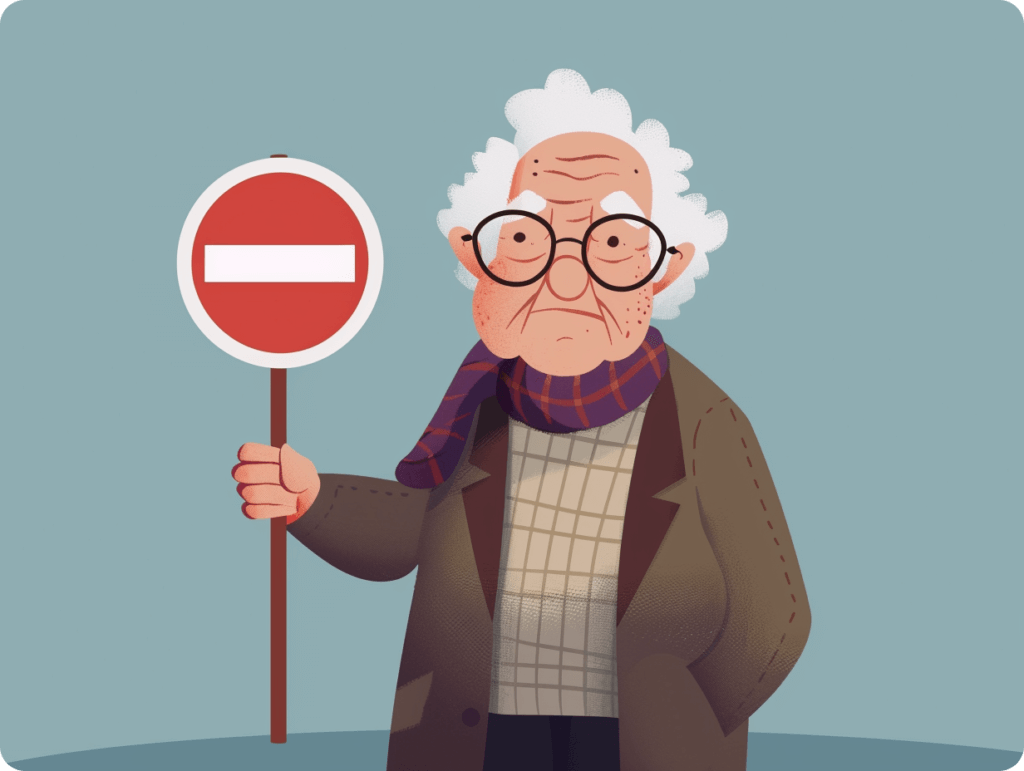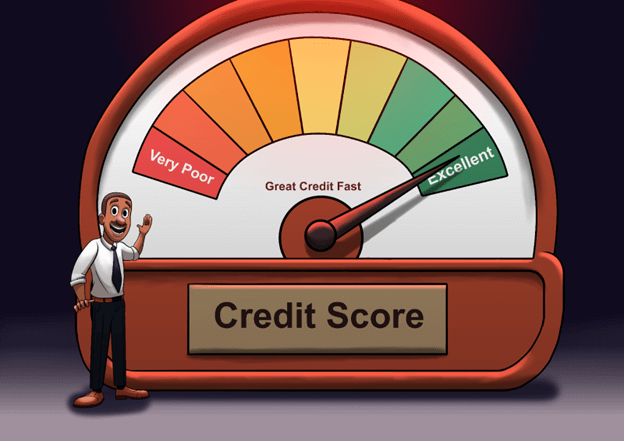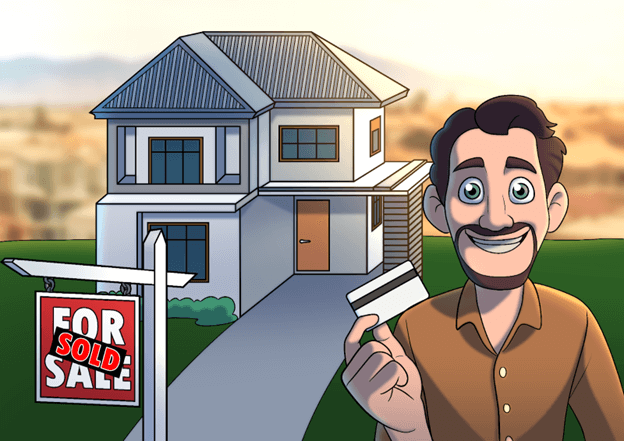- Blogs
- /
- How Does a Reverse Mortgage Work? 4 Popular Mistakes Fixed
How Does a Reverse Mortgage Work? 4 Popular Mistakes Fixed

Summary
Retirement is expensive. Most retirees would need between 70% – 90% of their pre-retirement income to maintain the same standard of living. One way many seniors maintain their standard of living is by using reverse mortgages.
Unlike traditional mortgages, where homeowners make monthly payments to build equity, reverse mortgages offer a unique arrangement where homeowners receive payments based on the equity they’ve already built up.
But how exactly does this work, and what are the implications for seniors and their families? That’s precisely what we’d be exploring in this comprehensive guide.
We’ll explore the eligibility criteria and the intricate workings of reverse mortgages. By the end, you’ll have valuable insights to help you make informed decisions about your retirement plans.
Key Takeaways
- Unlike traditional mortgages, reverse mortgages allow you to receive payments based on your home’s equity.
- Reverse mortgages help supplement your retirement income. To qualify for a reverse mortgage, you must be 62, own your home outright, and have over 50% home equity.
- The three main types are Home Equity Conversion Mortgages (HECMs), proprietary reverse mortgages, and single-purpose reverse mortgages.
- The amount you’ll receive depends on your age, home value, interest rates, and the type of reverse mortgage you choose.
- You can opt for lump sum payments, monthly payments, or lines of credit. Each of these has its unique advantages.
- Repaying the loan only happens when the borrower permanently moves, sells the home, or passes away.
How Does a Reverse Mortgage Work
A reverse mortgage allows homeowners to tap into their home equity without selling, moving, or worrying about their credit scores. It’s like receiving a loan using your home as collateral, but you don’t have to make monthly payments.
The money you get can be used for anything. From covering your daily living expenses to paying for your healthcare costs.
Reverse mortgages are mainly aimed at senior citizens who own their homes outright or have significant equity. These loans help older folks access funds tied up in their homes to supplement their retirement income so they can live comfortably.
However, it’s crucial to understand the implications and costs associated with reverse mortgages before committing.
5 Key Eligibility Requirements for Reverse Mortgages

1. Age Requirement
To qualify for a reverse mortgage, you must typically be at least 62 years old. This age requirement ensures that the borrower is considered a senior citizen, as reverse mortgages are primarily designed to provide financial assistance to retirees.
2. Home Ownership
To qualify for a reverse mortgage, you must own your home outright or have significant equity. That’s because the reverse mortgage allows you to access the equity you’ve built in your home over the years. So, you can’t apply for a reverse mortgage if you do not own the property.
3. Primary Residence
The property you seek a reverse mortgage must be your primary residence. This means you live in the home for most of the year. Vacation homes or rental properties typically do not qualify for reverse mortgages.
4. Financial Assessment
Lenders will conduct a financial assessment to determine if you can continue paying property taxes, homeowners insurance, and maintenance costs associated with the home. This assessment ensures you can maintain the property and meet your financial obligations.
5. Counseling Session
Before obtaining a reverse mortgage, you must attend a counseling session with a HUD-approved counselor.
During this session, the counselor will provide information about reverse mortgages, discuss alternative options, and help you understand the potential risks and benefits.
Common Misconceptions About Reverse Mortgages

1. The Bank Owns Your Home
With a reverse mortgage, the bank does not own your home. You still have ownership of your primary residence. These loans let homeowners change their home equity into cash. Homeowners need to pay property taxes, insurance, and repairs.
Reverse mortgages ensure you retain ownership of your house while accessing its equity for cash needs or retirement planning.
2. You Can Owe More Than Your Home Is Worth
Contrary to popular belief, you cannot owe more than what your home is valued at with reverse mortgages. The loan balance will never surpass the value of the property.
This protection guarantees homeowners won’t face debts exceeding their property’s worth. It’s a safe financial option for many retirees seeking additional income without risking losing their homes.
Reverse mortgages provide financial security by preventing homeowners from accumulating debt beyond their property’s value.
3. Reverse Mortgages are Only for People Facing Financial Distress
Despite common belief, reverse mortgages aren’t just for those facing financial hardship. Many retirees use them to supplement income, cover expenses, or fund retirement dreams while staying in their homes.
Reverse mortgages offer flexibility and strategic planning opportunities. They allow homeowners to convert equity into tax-free cash without selling their property, making them valuable tools for maintaining financial security and independence in retirement.
4. You Need a High Credit Score
Traditional mortgages often require a strong credit score and history to qualify for favorable terms. But, reverse mortgages focus more on other factors such as age, home equity, and property value.
Since reverse mortgages are backed by the equity in your home and not your creditworthiness, even folks with lower credit scores can still qualify for this financial option.
Three Major Types of Reverse Mortgages
1. Home Equity Conversion Mortgages (HECMs): These are the most popular and widely available type of reverse mortgage. That’s because HECMs are insured by the Federal Housing Administration (FHA), which is part of the U.S. Department of Housing and Urban Development (HUD).
The great thing about HECMs is that they offer flexible disbursement options like a line of credit, lump sum, monthly payments, or a combination.
To qualify, you must meet specific age and home equity requirements, undergo financial counseling, and maintain the property as your primary residence.
2. Proprietary Reverse Mortgages: This mortgage is called jumbo or private reverse mortgage. What makes them great is that they allow folks to borrow up to $4 million of their property’s equity.
Jumbo reverse loans are an excellent choice for homeowners with high home values who may exceed the HECM loan limits.
But, one thing worth noting is that these mortgages are often offered by private lenders and not backed by the government. And yes, these loans often have more flexible eligibility criteria and loan terms, but they may come with higher fees and interest rates.
3. Single-Purpose Reverse Mortgages: These are typically offered by state and local government agencies or nonprofit organizations. They’re designed for specific purposes like covering home repairs, property taxes, or energy-efficient upgrades.
Remember that single-purpose reverse mortgages may have income or property value restrictions and offer lower loan amounts than HECMs. This option is excellent for folks with limited financial resources who need assistance with specific expenses.
Here’s How Reverse Mortgages are Structured
1. Loan Amount
The amount you can get from a reverse mortgage is heavily based on your age, the appraised value of the home, current interest rates, and the specific terms of the kind of reverse mortgage you want.
Generally, the older you are, the higher the home value and the more funds you may be eligible to receive.
2. Disbursement Options
You can typically choose from various disbursement options like lump sum payments, monthly payments, a line of credit, or a combination.
3. Interest Accrual
Unlike traditional mortgages, which allow you to make monthly payments to reduce the loan balance when you take a reverse mortgage, the loan balance typically increases over time as interest accrues.
And you’re not required to make monthly payments as long as you continue to meet the loan obligations, like paying property taxes, homeowners insurance, and maintaining the property.
4. Repayment
Your reverse mortgage only becomes due when you permanently move out of the home, sell the home, or pass away.
Once any of these happens, the loan balance must be repaid, usually by selling the home. If you sell the home for more than the loan balance, the remaining equity belongs to you or your heirs.
However, if you sold the home for less than the loan balance, the lender absorbs the loss through mortgage insurance, and neither you nor your heirs are held responsible for the shortfall.
5. Non-Recourse Feature
Most reverse mortgages have a non-recourse feature, which means that you or your heirs will never owe more than the appraised value of the home at the time of repayment.
This feature protects you from owing more than the home is worth, even if the loan balance exceeds the home value.
Here’s How Reverse Mortgages are Disbursed

1. Lump Sum
With this option, you’ll receive the entire loan amount in a single, upfront payment. This lump sum is excellent for covering significant expenses or investments, like home renovations, medical bills, debt consolidation, or purchasing another property.
But, you must be careful when considering how the funds will be used. That’s because taking the entire amount upfront means there won’t be any additional funds available later.
2. Monthly Payments
You can choose to receive regular monthly payments from the reverse mortgage lender. These payments provide a steady stream of income, which can help supplement your retirement income or cover ongoing living expenses.
3. Line of Credit
With this option, you get a line of credit that works similarly to a traditional or home equity line of credit (HELOC).
If you choose this option, you can access the funds whenever you need it, up to the approved credit limit. But you cannot withdraw the entire amount upfront.
Instead, you can use the line of credit to cover unexpected expenses, emergencies, or other financial needs when they arise.
4. Combination
Some reverse mortgage lenders offer a combination of disbursement options, allowing you to customize your loan according to your financial needs. For example, you may receive a lump sum upfront to cover immediate expenses and access additional funds through monthly payments or a line of credit for ongoing needs.
5. Term Payments
When you opt for term payments, you’ll get monthly payments for a fixed period, like 5, 10, or 15 years. Term payments are a great choice if you’ve got specific financial goals or obligations you want to meet within a defined timeframe.
Pros and Cons of Reverse Mortgages
Why You Should Choose Reverse Mortgages
Reverse mortgages allow seniors to access their home equity without selling their property. This means they can tap into the value of their home while still living in it, providing financial flexibility.
The funds obtained from a reverse mortgage can be used for various purposes like covering daily expenses, paying off debts, or addressing healthcare needs.
Moreover, reverse mortgages offer different options for receiving funds. You can choose between a lump sum payment or regular installments based on your preferences and financial requirements.
This flexibility empowers you to manage your finances effectively and cater to specific needs.
- Enables access to home equity without selling property
- Provides financial flexibility for various expenses
- Offers choices in how funds are received (lump sum or regular payments)
Why You Shouldn’t Choose Reverse Mortgages
Despite the benefits, there are some drawbacks to reverse mortgages. Over time, these loans can gradually deplete the equity in your home, potentially reducing the inheritance you leave behind for your heirs.
The costs associated with reverse mortgages, like interest rates and fees, tend to be higher than traditional mortgages.
Furthermore, failing to meet the loan obligations could lead to foreclosure on your property. It’s crucial for anyone considering a reverse mortgage to weigh these risks against the benefits before making a decision that impacts both current finances and future inheritances.
- May reduce inheritance by depleting home equity over time
- Higher costs (interest rates and fees) than traditional mortgages
- Risk of foreclosure if loan obligations aren’t met.
Final Thoughts
Now that you understand how a reverse mortgage works, the pros and cons, eligibility requirements, and common misconceptions, you can make an informed decision.
Remember, a reverse mortgage can be a valuable tool for some folks, but carefully weigh the benefits against the potential drawbacks.
If you meet the criteria and understand the implications, a reverse mortgage could provide financial flexibility in your retirement years.
Don’t rush into any decisions without doing thorough research and seeking advice from financial professionals. Your home is a significant asset; tapping into its equity through a reverse mortgage requires careful consideration.
Take your time, ask questions, and ensure you fully comprehend the terms before moving forward. Remember, your financial well-being is worth the effort.
FAQs
How does a reverse mortgage work?
A reverse mortgage allows homeowners, typically aged 62+, to convert part of their home equity into cash.
Instead of making monthly payments to a lender, the lender makes payments to the homeowner. The loan is repaid when the borrower moves out, sells the house, or passes away.
How do I apply for a reverse mortgage?
To apply for a reverse mortgage, you must attend counseling sessions with an approved counselor who will explain how these loans work. Then, you can choose a lender that offers this type of loan product and begin the application process with them.
Are there specific requirements to be eligible for a reverse mortgage?
Yes, you typically need to be at least 62 years old, own your home outright, or have a low mortgage balance that can be paid off with the proceeds from the reverse loan. You must also live in the home as your primary residence.
How does repayment work with a reverse mortgage?
Repayment occurs when you permanently move out of the house, sell it, or pass away. At this point, you or your heirs must repay the loan plus accrued interest and fees from selling the property.
Can I explore alternatives before opting for a reverse mortgage?
Yes, alternatives such as downsizing, refinancing traditional mortgages, and utilizing savings/investments suit your financial goals better than taking out a reverse mortgage. It’s crucial to compare different options based on your circumstances before deciding.
Our Latest Blogs:

ThisIsJohnWilliams
FREE Strategy Session to Fix Your Credit Blogs / It’s no longer a secret that credit scores are a...

ThisIsJohnWilliams
FREE Strategy Session to Fix Your Credit Blogs / Facebook Twitter Linkedin Instagram Share Summary Say you’ve finally found...

ThisIsJohnWilliams

ThisIsJohnWilliams
FREE Strategy Session to Fix Your Credit Blogs / Facebook Twitter Linkedin Instagram Share Summary Discovering the keys to...

ThisIsJohnWilliams






